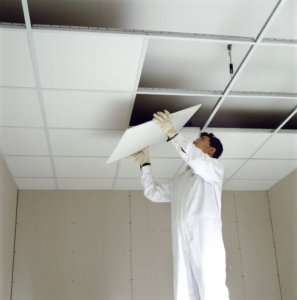A well-maintained commercial landscape creates a positive first impression and boosts a property’s value. It also helps attract more clients and promotes brand image.

Unlike residential landscaping services, Greensboro Commercial Landscaping Services are often subject to different regulations. These include permits, scope of work and maintenance. To provide accurate estimates, it is important to understand these differences.
Commercial landscaping is a crucial part of managing business properties. It increases curb appeal, makes a great first impression, and enhances property value. It also helps with employee satisfaction and productivity. However, the cost of commercial landscape services can be expensive, especially for multi-location businesses. It is important to understand the factors that affect costs and work with a managed service provider who can create a budget that works for your company.
The size of a commercial property is one of the largest contributors to the cost of commercial landscape services. The larger the property, the more labor and materials are required to maintain it. The type of vegetation and the level of maintenance required also affects costs. For example, certain plants are more water-demanding than others and require more frequent irrigation and fertilization. Commercial landscape services can include lawn mowing, hedge trimming, and mulching. They can also include seasonal services such as snow and ice removal.
Having a well-maintained commercial landscape is not only good for the visual appeal of a business, but it is also beneficial for safety. Proper walkways and stairways allow employees and customers to move around the property safely. Additionally, a proper landscape design can help prevent soil erosion and reduce water runoff.
Landscaping also improves air quality. Plants absorb carbon dioxide and other pollutants, releasing oxygen, and they can also reduce the amount of heat absorbed by buildings. This reduces the need for air conditioning and saves energy costs. It is also a great way to promote a healthy workplace. Studies have shown that workers who are exposed to nature and natural light are more productive and happier.
Many companies choose to hire full-service landscaping firms that have the capabilities and experience to provide comprehensive landscape solutions. These professionals will be able to handle projects of all sizes, from design to construction and maintenance. Choosing a full-service firm will also eliminate the need to work with multiple subcontractors, saving time and money.
Commercial landscaping is a unique field that involves working with clients to understand their needs and expectations. It requires a different set of skills and knowledge than residential landscaping, as the requirements are more complex. A successful commercial landscaper must be able to manage the project from beginning to end and must have an in-depth understanding of local laws, regulations, and climate conditions. In addition, they should have experience with commercial landscapes, including office buildings, retail stores, apartment complexes, hospitals, and educational institutions.
Maintenance
Commercial landscaping services are designed to keep outdoor spaces beautiful year-round. They offer a range of maintenance options, from basic lawn care to more elaborate water features and plant beds. In addition, they can add seasonal colors to the landscape, and provide mulch and compost services. These services can help businesses create an appealing first impression and increase the value of their property.
Landscaping is a crucial part of any business or commercial property. Whether you are a restaurant owner or a retail store, your clients and customers will notice an attractive, well-maintained landscape. A professional commercial landscaping service will provide the highest quality work, and will ensure that your landscaping is consistent with your brand image.
They can also assist with the design and construction of outdoor features like ponds, fountains, or signage. This includes determining the proper size and placement for each feature, as well as ensuring that they are installed correctly. In addition, they can install additional outdoor amenities like seating areas. They can provide benches, chairs, gazebos, and other structures that will complement the look of your business and create a relaxing environment for employees and clients.
Commercial landscaping is different from residential landscaping in many ways, including the type of work required, the prerequisite skills, and the cost. It is a complex process that requires professional expertise and experience to achieve the desired results. Choosing a full-service company that can take on all aspects of your project will save time and money in the long run.
While the initial investment in landscaping may seem high, it can pay off in the long run. A well-maintained landscape can attract more clients and customers, which can result in higher sales and revenue. Moreover, it can also boost the value of your commercial property.
A well-maintained landscape is an important part of any business, and the entranceway is no exception. A poorly maintained entryway can send the wrong message to potential customers and turn them away before they even step inside your building. It is important to choose a landscaping company that provides regular maintenance for your landscape, so it looks its best at all times.
Design
Commercial landscaping involves the planning, designing and installation of aesthetically pleasing outdoor business spaces. This service can increase the output of workers, attract more clients and improve the overall reputation of a company. This type of job requires specialized tools, knowledge and experience. Commercial landscapers typically work with architects, engineers and interior designers to create the perfect outdoor space for a client. They also provide regular maintenance and irrigation services to keep the business space looking clean and fresh.
The design of a landscape is a complicated process that takes into account the size and shape of the area as well as its function. A professional commercial landscaping service can help clients plan and install trees, shrubs, flowers, lawns, water features, lighting and other accessories. These services can help a business stay on budget and ensure that the landscape is sustainable.
Another important aspect of the commercial landscape is its curb appeal. A well-maintained yard speaks volumes about the integrity and priorities of a business. A landscape with neatly trimmed bushes, green grass and healthy-looking trees tells customers that a company takes pride in its appearance. This translates to customer satisfaction and loyalty.
A commercial landscaping company should have a strong understanding of the different types of plants and their growth habits. This helps them choose the best plants for the client’s property and ensure that it will thrive in the climate of the region. A landscape designer can also use different types of plants to create shade, let in sunlight and block or deflect wind.
One of the most crucial aspects of a commercial landscape is its drainage system. This is important because it protects the foundation of buildings from water damage and prevents soil erosion. A professional landscaper can build drainage systems that keep the landscape dry and safe for employees, visitors and shoppers.
Landscapes that are properly maintained are not only safer and more attractive, but they also contribute to the environment by reducing greenhouse gases. Commercial landscapers should be aware of the environmental impact of their work and strive to make a positive contribution to the world.
Installation
Commercial landscaping is more than just mowing the grass in your business’s outdoor spaces. These services involve the planning, designing, and installation of aesthetically pleasing landscapes to create a positive image for your business and attract more customers. They can also help your employees work more efficiently in a comfortable and relaxing environment. You should look for a company that is familiar with working on commercial projects, as these can be more complicated than residential ones.
A commercial landscape service will take a proactive approach to the project, and will communicate with you throughout the entire process. This is essential to ensuring that your needs are met, and that the final product is up to par with your expectations. In addition, you should find a service that is knowledgeable about the different types of plants and trees, as well as their growth habits. This will ensure that your plants and trees thrive, and that you have a healthy and beautiful outdoor space.
In addition to lawn maintenance, a commercial landscaping service can install fences, gates, walkways, and lighting. These services are often a lot more complex than those offered by residential landscapers, and they require additional skill and licensing. A good commercial landscaper will also have experience working with the local zoning laws and environmental regulations.
The services that a commercial landscaping company provides are similar to those provided by residential landscapers, but they are geared toward the specific needs of businesses and industrial complexes. Commercial landscapers can help make your property more attractive, while still maintaining a safe and functional environment for employees, guests, and visitors.
Commercial landscapers can also help improve your corporate image by enhancing the exterior of your business with trees, shrubs, and flowers that reflect your company’s branding. They can also provide a clean, well-maintained entryway that is a welcoming first impression for your visitors and clients. They can even help you plan your outdoor space to make it more functional, such as providing shade or adding a water feature. Additionally, they can help you with seasonal adjustments, such as removing leaves or adding mulch to the garden.








